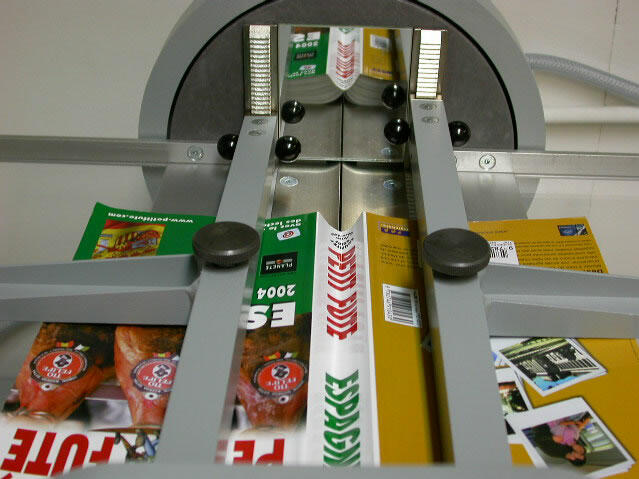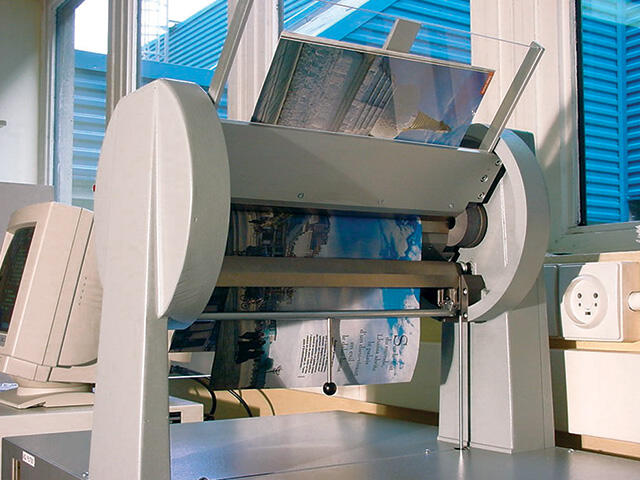
Tests on bindings
Tear strength of bindings
- Quality control
- Binding gluing quality
- Paper and board converting
General informations
Binding strength is determined using a Sigloch tester, a combined device that can be used to test both the page-pull strength and the page-flex strength of books and magazines with either perfect or stitched binding.Page-pull strength is determined by performing a “pull” test, and page-flex strength through a so-called “flex” test.
Almost all standard formats can be tested, with no need to prepare the books beforehand.
Performing these tests eliminates the risks of drift occurring during production due to an inadequate combination of papers, glues and manufacturing processes.
Technical Data and Achievements
The purpose of “pull” and “flex” tests is to characterise binding quality on finished books.
A “pull” test (page-pull strength) is performed to measure the force required to pull a page from the spine of the bound book. It is usually conducted on several parts of the binding (the beginning, the middle and the end of the book). The force is determined in N, and a binding strength in N/mm can also be calculated.
Other than the direction in which the tensile force is applied (downwards on a Marbach tester), the procedure implemented is identical to the one described in the standard ISO 19594 “Graphic technology - Test method for the determination of the binding strength for perfect-bound products - Page-pull test working upwards”.
A “flex” test (page-flex strength) is performed to determine how many times the pages can be turned over in normal conditions of use before they separate from the spine. After the test has been completed, a number of times a leaf can be rocked back and forth before a failure occurs is determined.
 |
 |
|
| Pull test | Flex test |